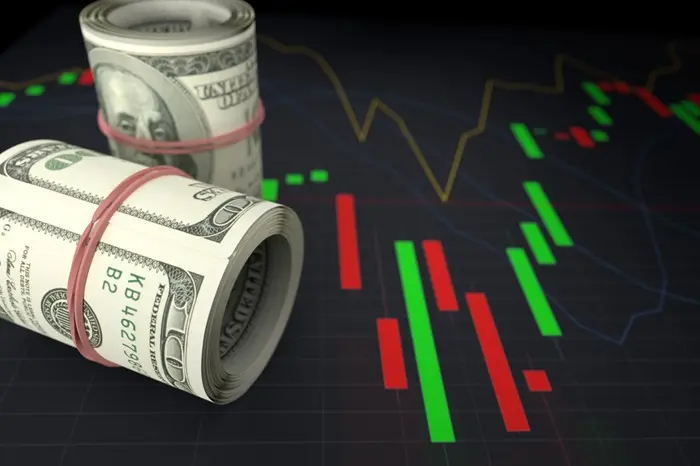In the dynamic world of stock markets, understanding technical terms and phenomena is crucial for making informed investment decisions. One such concept that frequently appears in market analysis is the “gap fill.” Whether you’re a seasoned investor or a newcomer to the financial world, knowing what a gap fill entails can significantly enhance your ability to navigate the market’s ups and downs. This article aims to provide a comprehensive and accessible guide to gap fills in stocks, including their definition, types, significance, and implications for traders and investors.
What Is a Gap in Stocks?
Before diving into gap fills, it’s essential to understand what a gap is in the context of stock markets. A gap occurs when there is a significant price movement in a stock between the closing price of one trading session and the opening price of the next session. This movement creates a “vacuum” or “gap” in the price chart, representing a range of prices that were not traded during that period.
For instance, if a stock closes at 100onMondayandopensat95 on Tuesday, a gap of $5 exists between these two prices. This gap can be either positive (upward gap) or negative (downward gap), depending on whether the opening price is higher or lower than the closing price.
Gaps are often caused by significant news events or overnight changes in market sentiment that occur after the market closes. These events can lead to a surge or a decline in demand for a stock, resulting in a jump or drop in its opening price the next day.
Types of Gaps
There are several types of gaps that traders and investors encounter in the stock market. Each type has its own characteristics and implications for market analysis.
1. Common Gap
Common gaps, also known as ordinary gaps, are the most frequent type of gaps. They occur during normal market conditions and are often the result of minimal trading activity or minor fluctuations in price. These gaps usually have no significant technical importance and are quickly filled as the market continues to trade.
2. Breakaway Gap
Breakaway gaps, or breakthrough gaps, signal the start of a new trend. They occur when a stock breaks out of a trading range or consolidation pattern, indicating a significant shift in market sentiment. Breakaway gaps are often accompanied by increased volume and are considered important technical signals for traders.
3. Running Gap (Continuation Gap)
Running gaps, also known as continuation gaps, occur during the middle of an ongoing trend. They represent a pause in the trend’s momentum and can occur when the market is “taking a breath” before continuing in the same direction. These gaps usually confirm the strength of the existing trend and provide traders with an opportunity to join the trend at a new, higher or lower level.
4. Exhaustion Gap
Exhaustion gaps, often found at the end of a trend, signal that the current trend is losing steam. They occur when the market pushes too far, too fast, and a lack of buying or selling interest creates a sharp price movement. Exhaustion gaps are often followed by a reversal in the trend, making them critical signals for traders to identify potential changes in market direction.
Understanding Gap Fill
Now that we’ve established what gaps are and their types, let’s delve into the concept of gap fill. A gap fill refers to the phenomenon where a gap in the price chart is eventually closed or filled over time. This means that the stock’s price returns to the price level where the gap was created, either fully or partially.
Gap fills are driven by various factors, including market sentiment, technical analysis, and fundamental events. In many cases, gap fills occur as the market adjusts to new information or corrects oversold or overbought conditions.
Significance of Gap Fill
Gap fills are significant for several reasons:
1. Market Psychology
Gap fills often reflect a psychological adjustment in the market. When a gap occurs, it creates a vacuum that traders tend to fill as they seek to complete their price discovery process. Filling a gap provides a sense of closure and often leads to a resumption of normal trading patterns.
2. Technical Analysis
In technical analysis, gap fills are often considered important signals. Traders use gap fills to identify potential support and resistance levels, as well as to confirm or deny trends. The completion of a gap fill can often provide confirmation of a trend reversal or continuation, helping traders make more informed decisions.
3. Volume and Momentum
The volume and momentum associated with gap fills can provide valuable insights into the strength of the underlying trend. For example, a gap fill accompanied by high volume may indicate a strong underlying trend, while a gap fill with low volume may suggest a weaker trend or potential reversal.
Gap Fill Patterns and Strategies
Gap fills often follow specific patterns and can be used to develop trading strategies. Here are some common gap fill patterns and strategies:
1. Island Reversal
An island reversal occurs when a gap forms on both sides of a consolidation pattern, creating an “island” of prices that are isolated from the surrounding price action. This pattern often signals a significant reversal in the trend. Traders can use island reversals to identify potential entry and exit points for their trades.
2. Flags and Pennants
Flags and pennants are continuation patterns that often form after a sharp price movement and are followed by a small consolidation period. These patterns are often preceded by a gap and can be used to identify potential continuation signals. Traders can look for gap fills within these patterns to confirm the continuation of the existing trend.
3. Trading Ranges
Trading ranges, or consolidations, occur when a stock’s price oscillates within a specific range for an extended period. Gap fills within trading ranges can provide traders with opportunities to buy or sell as the stock approaches the boundaries of the range. By identifying potential gap fills, traders can take advantage of price movements within the range and profit from short-term fluctuations.
4. Reversal Patterns
Reversal patterns, such as head and shoulders, double tops, and double bottoms, often involve gap fills as part of their formation. These patterns signal a potential change in the trend and can be used to identify entry and exit points for trades. By recognizing gap fills within reversal patterns, traders can anticipate changes in market direction and adjust their trading strategies accordingly.
Factors Influencing Gap Fill
Several factors can influence whether a gap will be filled and how quickly it will occur:
1. Market Sentiment
Market sentiment plays a crucial role in gap fills. If a gap is caused by a significant news event, the market’s reaction to that event will determine the likelihood of a gap fill. Positive news may lead to a quicker gap fill, while negative news may delay the process.
2. Technical Indicators
Technical indicators, such as moving averages, RSI, and MACD, can provide clues about the potential for a gap fill. For example, if a stock gaps above its moving average, the moving average may act as a resistance level, delaying the gap fill until the stock pulls back to the moving average.
3. Fundamental Factors
Fundamental factors, such as earnings reports, economic data, and geopolitical events, can also influence gap fills. A strong earnings report may lead to a quicker gap fill, while unexpected negative news may cause the gap to remain unfilled for an extended period.
4. Time Frame
The time frame over which a gap fill occurs can vary widely. Some gaps are filled within days or weeks, while others may take months or even years to close. The time frame for a gap fill often depends on the underlying strength of the trend and the market’s overall direction.
Conclusion
Gap fills are a critical component of technical analysis in the stock market. By understanding the types of gaps, the significance of gap fills, and the factors that influence them, traders can develop more informed trading strategies. Whether you’re a short-term trader or a long-term investor, gap fills provide valuable insights into market behavior and can help you navigate the complex and ever-changing landscape of the stock market.
Related topics:






























